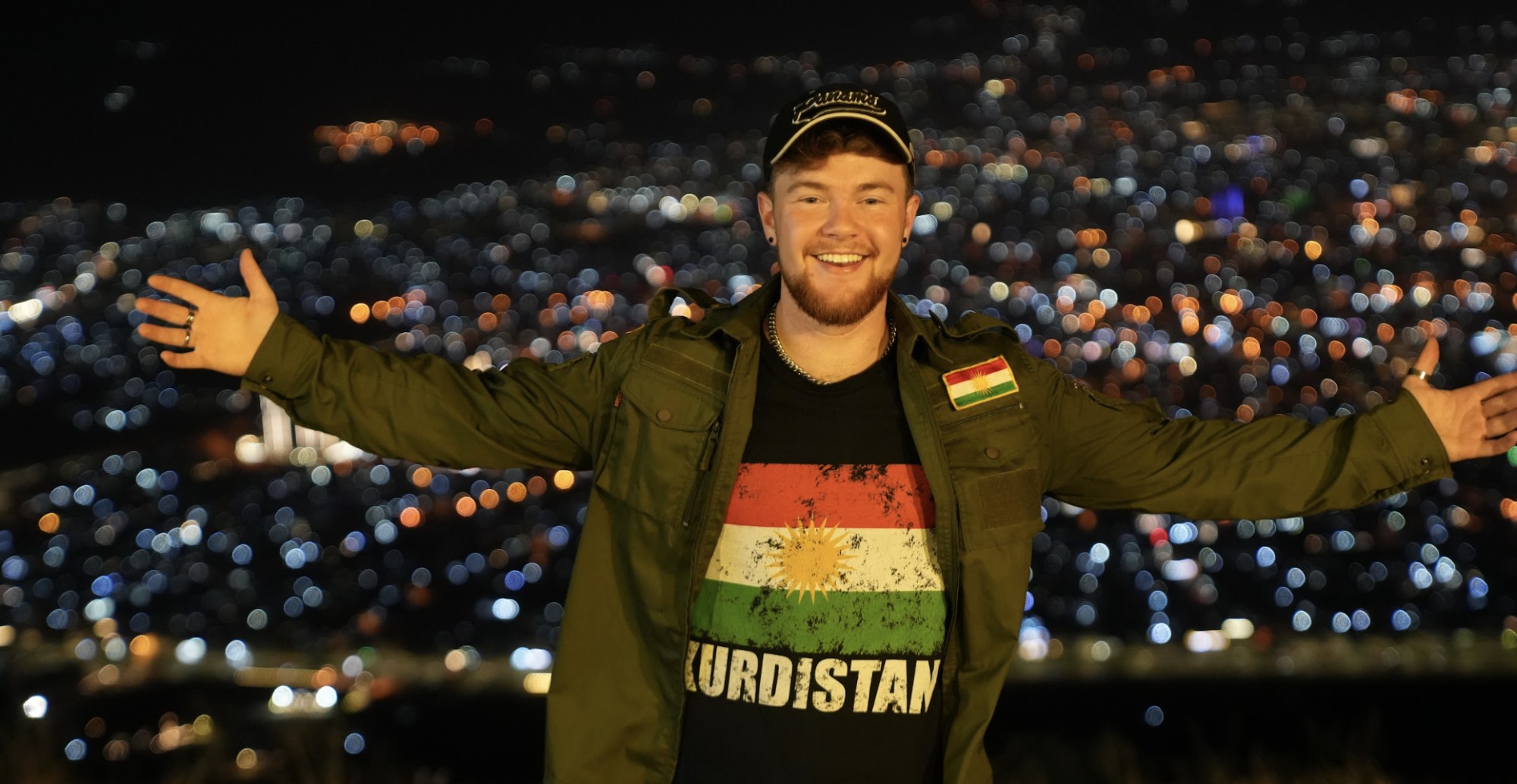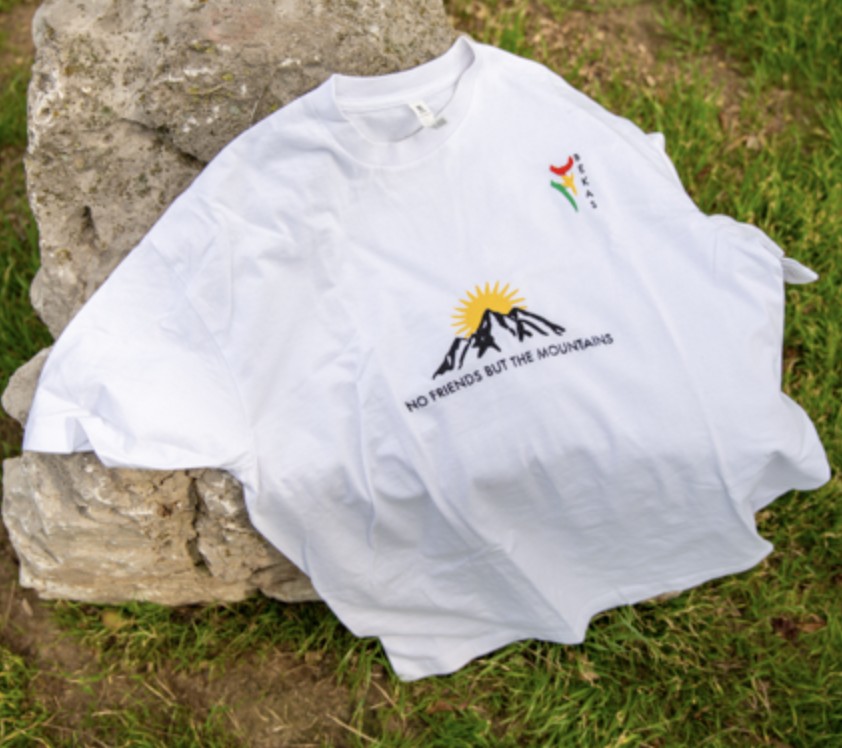In 1976, Hameed Alemadi became the first Kurdish person to settle in the U.S. state of Minnesota, forever linking the city of Moorhead with the Kurdish diaspora. Originally from Amedi, a town in the Duhok Governorate of the Kurdistan Region, Hameed’s path to the United States began with his involvement in the Kurdish revolution. As a peshmerga fighter, he joined the struggle for Kurdish rights and self-determination. However, as the Iraqi government intensified its crackdown on Kurdish resistance, Alemadi was forced to make a difficult decision and flee his homeland, seeking refuge in the United States.
The first wave of Kurdish immigration to Minnesota began in the 1970s after the collapse of the Kurdish revolution, with Alemadi as the trailblazer. This wave was followed by a second in 1991, during the mass exodus of 1.5 million Iraqi Kurds fleeing Saddam Hussein’s brutality. A third wave arrived after the U.S. invasion of Iraq in 2003, when many Kurds who had worked with the U.S. military sought refuge in the United States.
Today, Minnesota is home to approximately 4,000 Kurdish people, with around 3,500 of them residing in Moorhead. As the largest Kurdish community in the state, Kurdish immigrants contribute significantly to life in Moorhead.
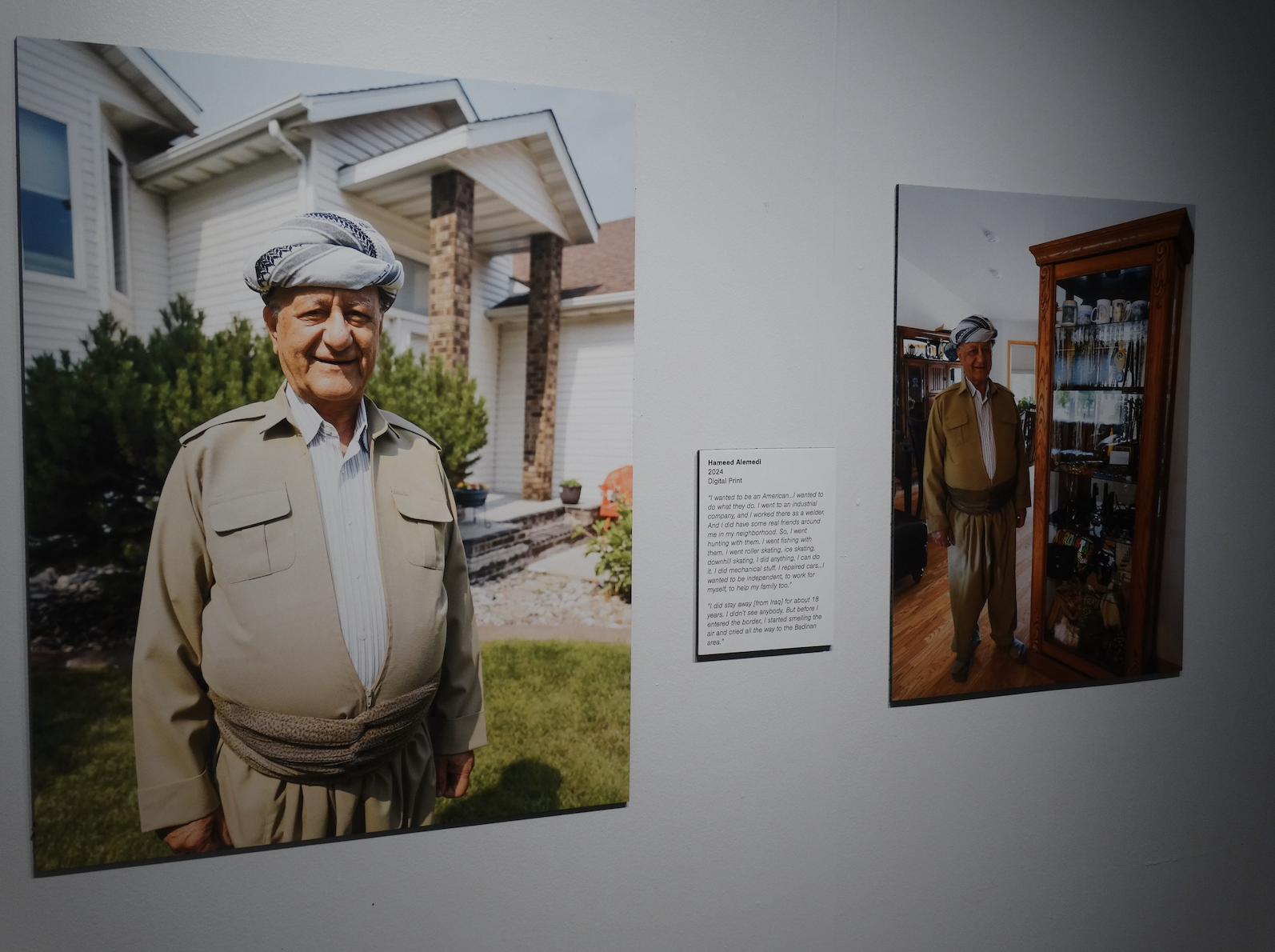
“Home of Memories”
Alemadi’s journey to Minnesota was not easy. Arriving in an unfamiliar landscape, Alemadi found himself trading the rugged mountains of Kurdistan for the bitter cold of the Midwest. Beneath the process of adjusting to a new environment, deeper emotional struggles emerged. He recalled his inability to return to Kurdistan for his nephew’s funeral due to the restrictions imposed by the Iraqi regime. “That was one of the saddest moments of my life,” he reflected somberly.
At a recent event at the Hjemkomst Center in Moorhead, Alemadi wandered through the “Home of Memories” exhibit, a tribute to the Kurdish immigrants who now call Minnesota home. Hosted by the Clay County Historical Society, the exhibit showcases portraits and personal stories of those who, like Alemadi, fled war-torn Iraq in search of a new beginning. Traditional Kurdish music played softly in the background as Hameed requested a few folk songs from his youth, momentarily transporting him back to his homeland.
The exhibit also highlights the journeys of other Kurdish immigrants. For instance, Meriam Farok arrived with her family in 1991 after their town in the Kurdistan Region was bombed. “We had to leave everything behind,” Meriam recalled. “But we held onto the hope that we would survive.”
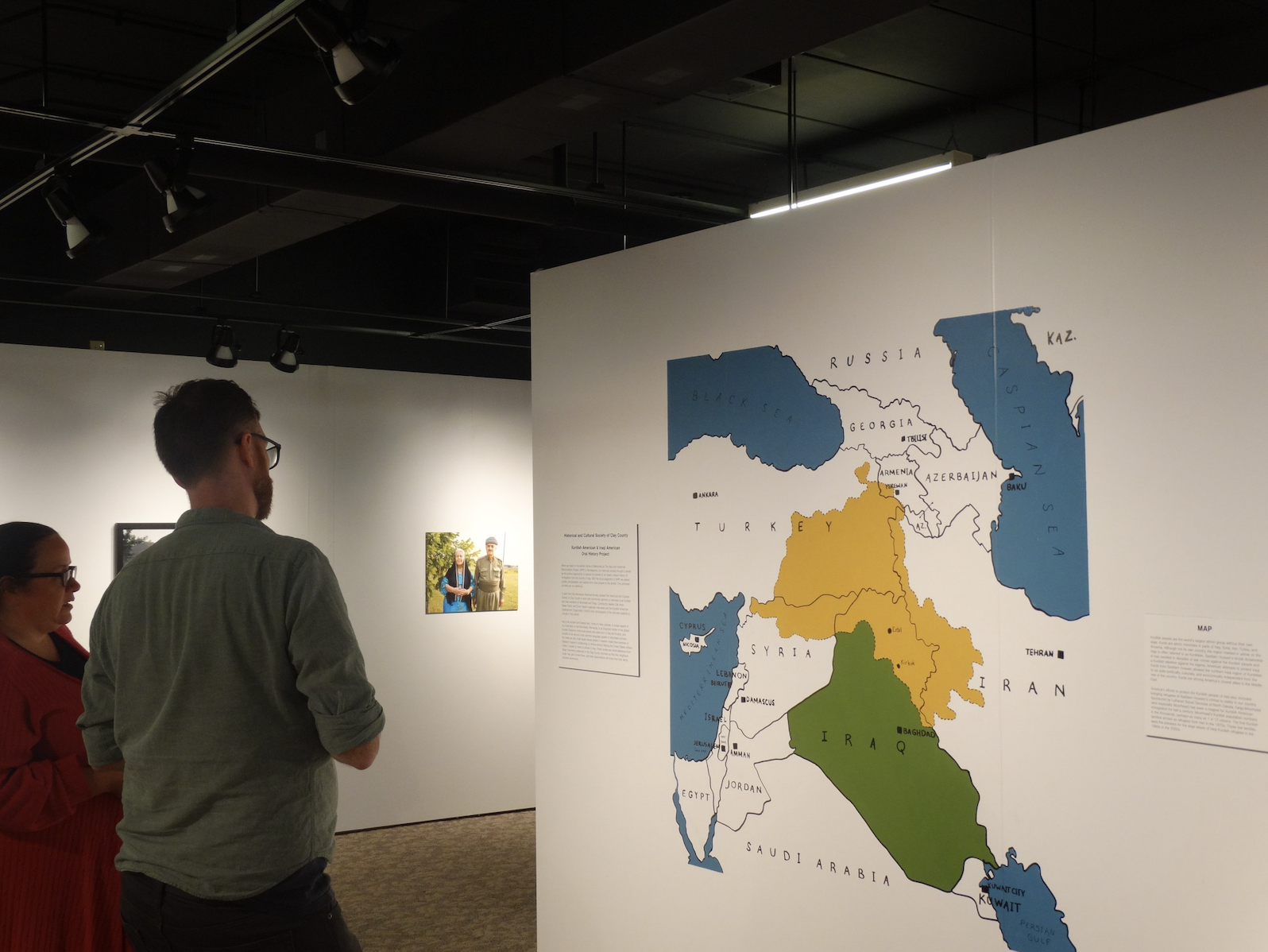
Now a nursing assistant in Moorhead, Farok takes pride in contributing to the community that welcomed her. Her niece, Kawar Farok, is the head of the Kurdish American Development Organization in Minnesota.
Another story in the exhibit is that of Hashim Goran, who arrived in Minnesota in 2012 after years of working as an interpreter for U.S. forces in Iraq. Today, Goran works as a career counselor, helping other immigrants navigate the challenges of starting over in a new country. “Leaving behind everything was hard, but we had to find safety,” he said. “Minnesota became our new home.”
Another unique story is that of Zak Amin, a Kurdish immigrant who arrived in 2015, and now teaches English and Kurdish heritage classes at Moorhead High School, ensuring that young Kurdish students stay connected to their roots. His dedication to empowering Kurdish youth through education earned him the 2024 Minnesota Education Human Rights Award. Amin’s influence in the community continues to grow, and he is now running for a seat on the Moorhead City Council.
Artifacts from Kurdistan brought by the Kurdish families that have built new lives in Minnesota fill the “Home of Memories” exhibit. Among them is a notebook filled with poems written by Amin during his time in Kurdistan. Alemadi, for his part, contributed a handmade bag once used by peshmerga fighters, along with a traditional Kurdish hat and shoes. These simple yet powerful items tell the story of a people who have carried their culture with them, even in the face of displacement.
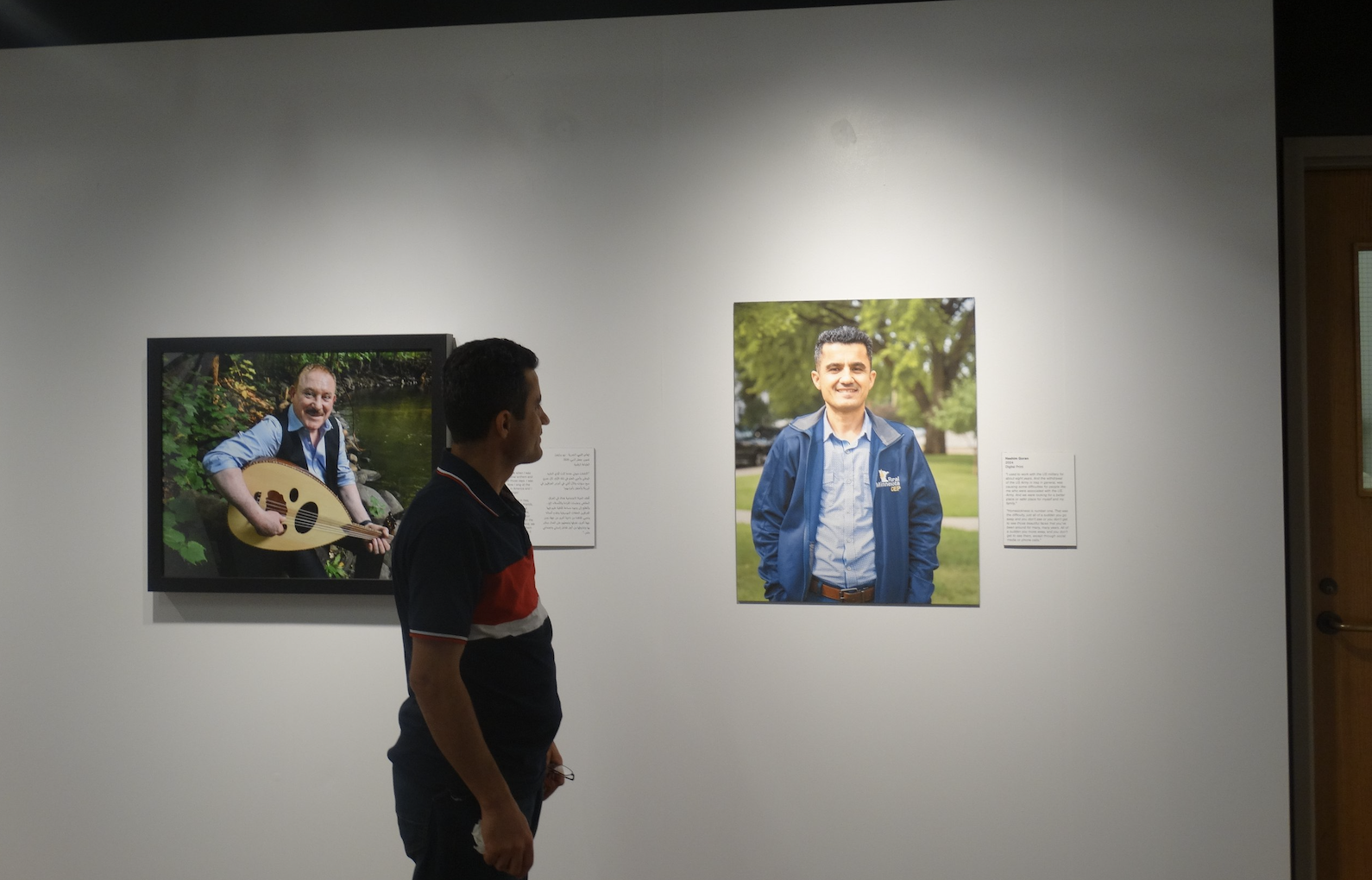
Little Kurdistan
Another prominent figure in Moorhead’s Kurdish community is Siham Amedy, chair of the Moorhead Human Rights Commission. Raised in Minnesota but deeply connected to her Kurdish roots, Amedy is committed to preserving Kurdish culture and sharing it with the broader public. Through her videography projects, she has documented Kurdish traditions such as grape leaf picking for yaprakh, the Kurdish version of stuffed grape leaves, ensuring that these cultural practices remain alive in the diaspora. Meanwhile, Amedy’s passion for human rights and cultural awareness earned her recognition as the YWCA Women of the Year for Fargo-Moorhead.
At the event’s opening reception, Alemadi reflected on his journey from a young peshmerga to becoming the first Kurdish person to settle in Minnesota. Now retired, he is proud of the community that has grown around him. “I didn’t know what my life would be like when I first came here,” he said. “But now, my children and grandchildren are thriving in this new home.”
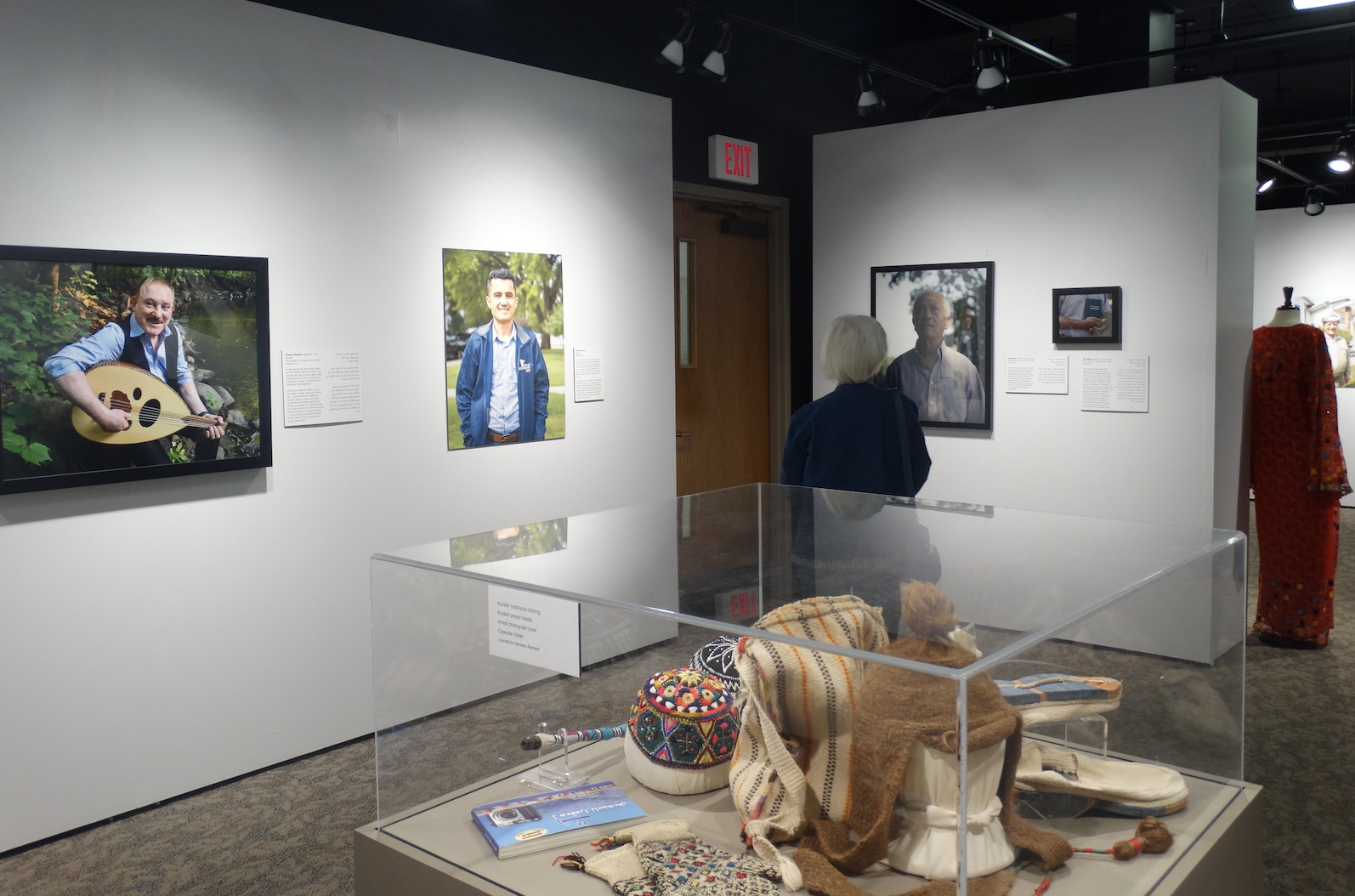
Marcus Krieger, a historian with the Clay County Historical Society, reflected on the broader impact of the Kurdish community in Moorhead. “This town has always been a place where immigrants came to build a new life. First, it was Norwegians, and now it is Kurds who are adding to the fabric of this community,” he said, affectionately dubbing Moorhead the “Little Kurdistan” of Minnesota.
The exhibit, which runs until June 2025, is more than just a collection of photos and stories. It is an opportunity to understand the lives of Kurdish Minnesotans – the struggles they have faced, the culture they have preserved, and the contributions they have made to their new home in the United States. Through events like this, the story of Moorhead’s Kurdish community continues to be told, ensuring that future generations will remember the people who helped make it what it is today.
Qassim Khidhir has 15 years of experience in journalism and media development in Iraq. He has contributed to both local and international media outlets.
